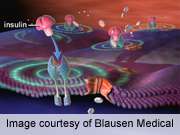Patient-centered diabetes care is most effective when targeted to patients with HbA1c >8.5 percent, according to a study published online Aug. 15 in Diabetes Care.
(HealthDay)—Patient-centered diabetes care is most effective when targeted to patients with HbA1c >8.5 percent, according to a study published online Aug. 15 in Diabetes Care.
Annabelle S. Slingerland, M.D., M.P.H., from the Leiden University Medical Center in the Netherlands, and colleagues randomized 506 patients with type 2 diabetes seen at 13 hospitals (cluster-randomized) to patient-centered (237 patients) or usual care (controls; 269 patients). Change in HbA1c, quality-adjusted life years (QALYs), and costs were the outcomes of interest. Patients were stratified by baseline HbA1c: <7.0 percent (53 mmol/mol), 7.0 to 8.5 percent, and >8.5 percent (69 mmol/mol).
The researchers found that patient-centered care was most effective and cost-effective in those with baseline HbA1c >8.5 percent, with HbA1c reduction after one year of 0.83 percent and an incremental cost-effectiveness ratio (ICER) of US$261 per QALY. This would translate to a lifetime gain of 0.54 QALYs at a cost of US$3,482 (ICER, US$6,443/QALY). For those with baseline HbA1c 7.0 to 8.5 percent, there was a gain of 0.24 QALY at a cost of US$4,731 (ICER, US$20,086/QALY). For patients with a baseline HbA1c <7.0 percent, care was not cost-effective.
"Patient-centered care is more valuable when targeted to patients with HbA1c >8.5 percent (69 mmol/mol), confirming clinical intuition," the authors write.
More information:
Abstract
Full Text (subscription or payment may be required)
Journal information: Diabetes Care
Copyright © 2013 HealthDay. All rights reserved.























